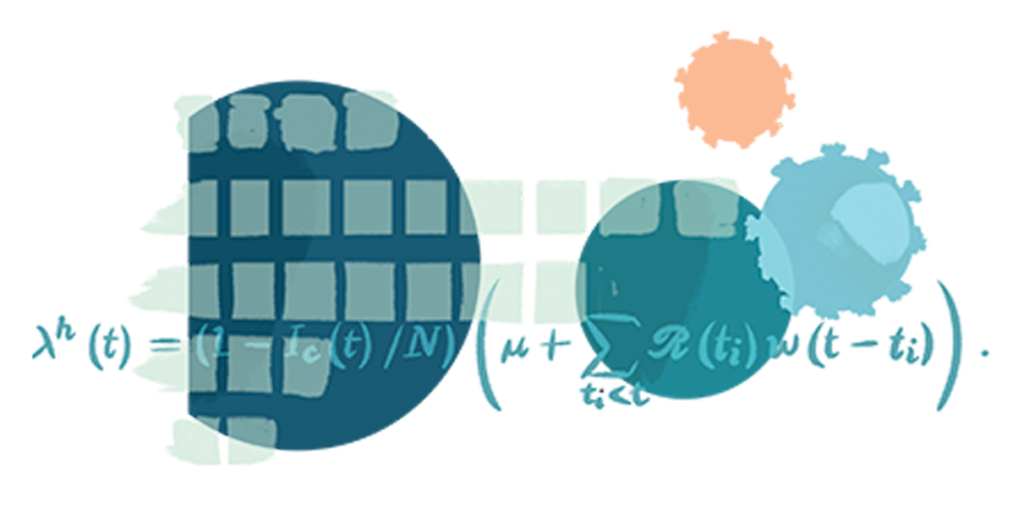“I’m definitely very happy about this data revolution that’s happening, where people are taking data analysis seriously,” says Rick Paik Schoenberg, professor of statistics. “It’s obvious both at UCLA and beyond.”
He finds this true in both his teaching role and in his research, which has involved using data to create forecasting models for earthquakes, wildfires, crime and even disease.
For some of this work, he has partnered with Andrea Bertozzi, UCLA’s Betsy Wood Knapp Chair for Innovation and Creativity, director of applied mathematics and distinguished professor of mathematics and mechanical and aerospace engineering. When the COVID-19 pandemic began, the two were asked to volunteer on a Los Angeles County Department of Public Health committee to forecast the number of hospital beds, personnel and equipment that would be needed per day.
“It was a remarkable time — thrilling but also scary — for us to see the mathematical modeling making an impact at that level,” Bertozzi says, “because of the high stakes of what the county would decide after taking the information we provided into account.”
Bertozzi and Schoenberg were able to get many graduate and even undergraduate students involved in this research. And the pair has continued to push forward, both together and individually, on other projects that use similar tools and approaches.
“I have a component of my research that involves sorting through large batches of data, sometimes incorporating active learning where a human is involved in the algorithm,” Bertozzi says. “For example, we’re working on remote sensing with scientists at Los Alamos National Lab, and they’re interested in detecting surface water in remote areas like the Arctic. This is a big issue if you’re looking at global warming — how can you take these data and predict where water and other resources will be?”
This type of research dovetails with work being done by Karen McKinnon, an assistant professor in both UCLA’s department of statistics and data science and the Institute of the Environment and Sustainability.
“There has been an explosion of tools, most using open-source software, which reveal new avenues for data analysis. The challenge is determining which tool is the right one for the scientific question of interest,” says McKinnon. “I am most excited about big data methods that have the potential to allow us to learn something new about the climate system. The most exciting future directions are at the interface of physics and machine learning, wherein physical constraints are used in tandem with purely data-driven models.”
Using statistical methods to bridge the gap between simulations and observations can provide much-needed insight into better understanding how Earth’s climate has already changed — and how it may continue to do so.
Across the UCLA Division of Physical Sciences and beyond, there is a huge number of faculty using data to do interesting, cutting-edge work about climate science and human responses to climate change.
— Karen McKinnon
“Much of what we know about the environment is from measurements that we have taken across time and space, and statistics can help us make sense of this data,” McKinnon adds. “Across the UCLA Division of Physical Sciences and beyond, there is a huge number of faculty using data to do interesting, cutting-edge work about climate science and human responses to climate change.”
The eagerness of students to get involved in this field, and the potential they see in it to make a big difference for the future of the world, hits home with Schoenberg every day in his role as director of the department’s master of applied statistics and data science program.
“We’re getting more than 400 applications a year for this one program alone, our alumni are getting good jobs and a lot of companies are wanting to partner with us,” Schoenberg says. “It’s definitely an exciting time to be a statistician.”
